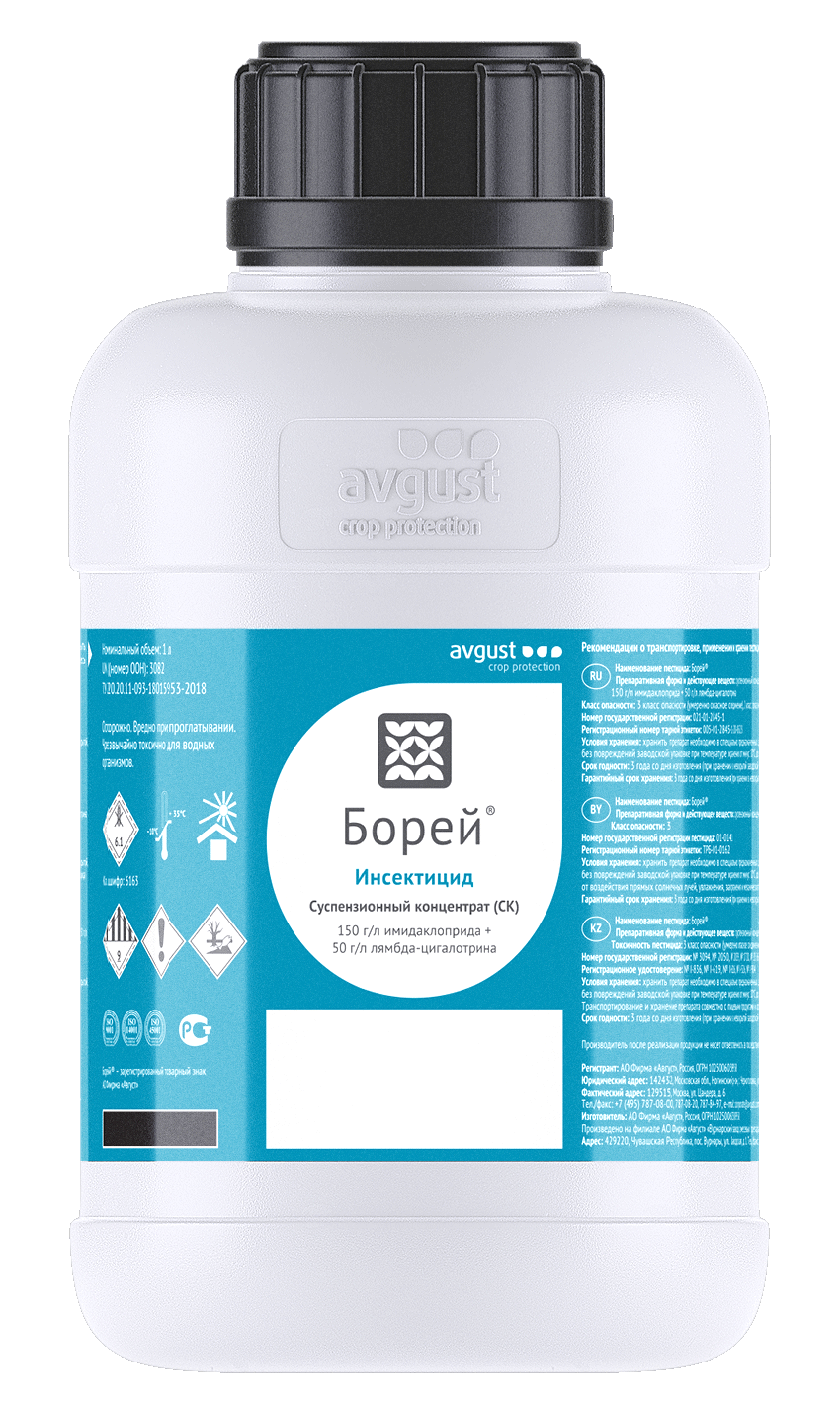
Borey
imidacloprid, 150 g/l + lambda- cyhalothrin, 50 g/l

imidacloprid, 150 g/l + lambda- cyhalothrin, 50 g/l
Benefits of the drug:
• Two that have different mechanisms of action original combination of the active component
• Movement speed and long-term protection combination
• Three-way movement-contact, intestinal and systemic
• The bottom of hidden pests and leaves elimination of those who feed in part
• To pyrethroids and Phos-resistant populations counter-efficiency
* resistance to sunlight and heat
Form of preparation:
Suspension concentrate
Mechanism of action:
Imidacloprid has systemic activity, leaves, enters plants through stems and roots, spreads along the parenchyma and along the plant moves. Multiple species of rodent and sucker it has a contact-intestinal effect on harmful insects. Lambda-tsigalotrine treated plant it remains on the surface and has a contact-intestinal effect.
Impact speed:
After the drug enters the body of pests after a few minutes they eat they stop and die within 24 hours. Protection period: 14-21 days on average.
Recommendations for use:
Crops in seedlings with borey® or later during the growing season of crops, pests are processed when they exceed EPV. Against Grasshoppers-larval development during the period. Use of the drug 1-2 times a season can. The waiting period for grain crops is 28 days, peas, tomatoes, carrots, cabbage, apple trees and vineyards-30 days, potatoes and beets-20 days, rapeseed-38 days, onions-25 days, and in pastures unregulated. Insecticide worker
adding auxiliary adhesives to the solution increases efficiency.
Limitations:
Borey® is very dangerous for bees (the border protection zone for bees is at least 4-5 km, limiting the flight of bees at least 120-140 hours).
Compatibility:
Compatible with fungicides Colossal® Pro, Colossal®.
Working fluid consumption:
In field crops – 200-400 l/ha, When spraying seedlings – 100-200L / ha, In apple trees-800-1500l / ha, In grapes-800-1200 l/ha, In air treatment-25-50 l / ha.
Two-component insecticide is a variety of corrosive and absorbent to pests, including hidden pests designed to fight back.
| Crop type | Pests | Standard of spending l / ga |
| Processing according to plant species | ||
| Wheat | Aphids thrips and fleas, harmful hasva, wheat Beetle | 0.08-0.1 l/ga |
| Barley | flies, wheat tripsy, aphids, slime worm, stake worm | 0.08-0.1 l/ga |
| Raps | Cruciform flea beetles, rapeseed flower Beetle, grain Beetle | 0.08-0.1 l/ga |
| Sugar beet | Aphids thrips and beetles, leaf moth | 0.1 – 0.12 l / ga |
| Peas | pea moth, pea juice, pea worm | 0.12-0.15 l/ga |
| Potato, tomato (open field) | Colorado Beetle | 0.08-0.12 l/ga |
| Cabbage | Aphids trips, fleas and moths | 0.1 – 0.14 l / ga |
| Grapes | Leaf mowers | 0.3 l/ga |
| Cotton | Aphids, thrips, root worm, | 0.3-0.4 l/ga |
| Onion | Onion fly, thrips | 0.3-0.4 l/ga |